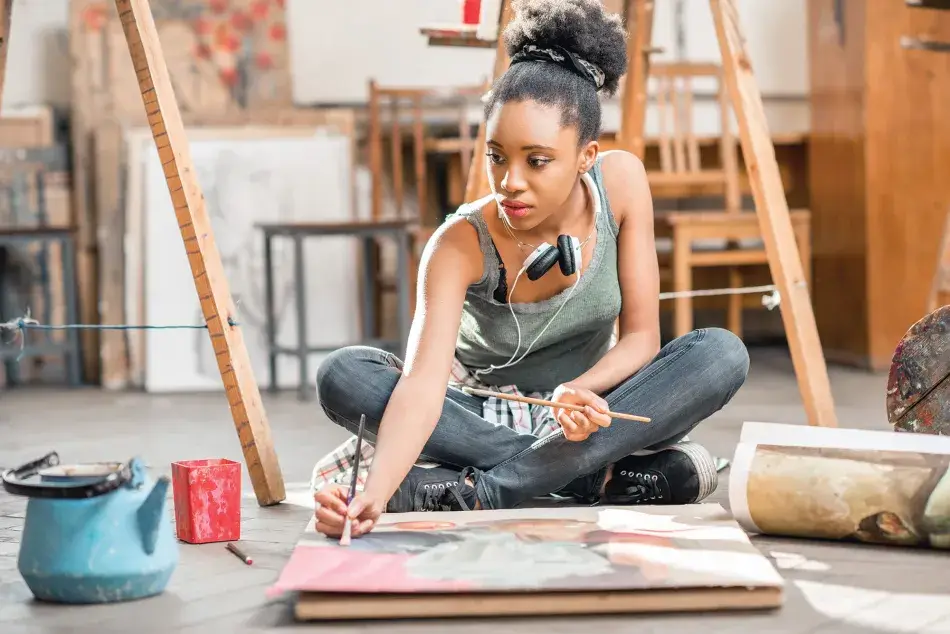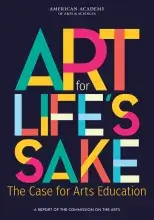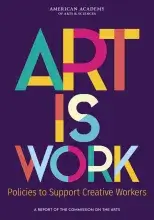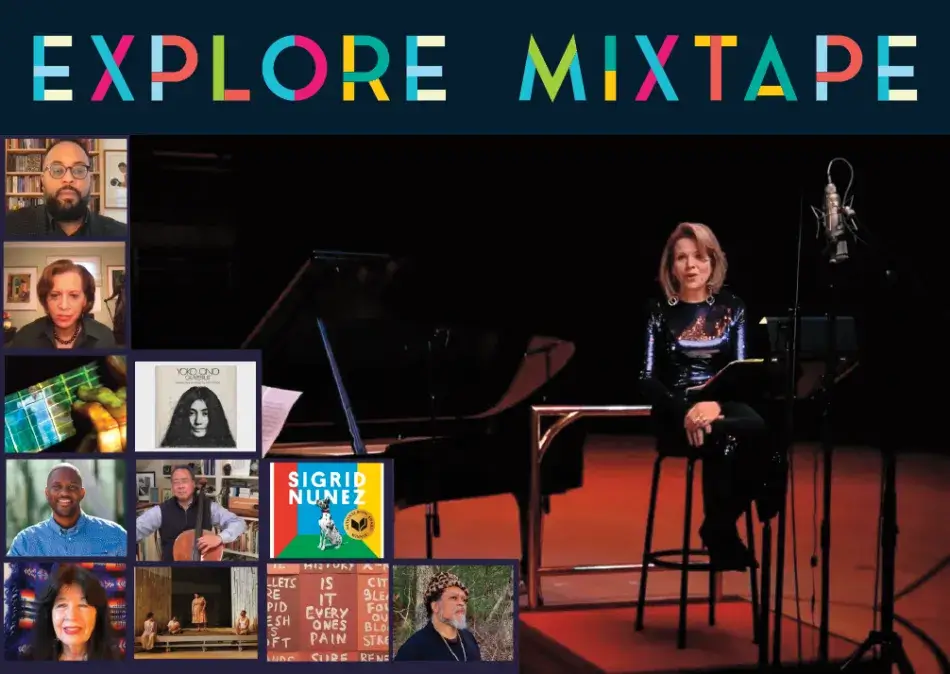
By Jessica Taylor, Louis W. Cabot Fellow in Humanities Policy at the Academy, and Susy Bielak, artist, writer, curator, and educator
Over the past three years, the American Academy’s Commission on the Arts has developed a rich and diverse array of materials to elevate and promote arts education, the creative workforce, and the arts generally. Given where the Commission started in 2018, its final results were not entirely expected, as Commission Cochair John Lithgow (actor, writer) notes elsewhere in this issue of the Bulletin. What started out as a celebration of the arts was fundamentally reoriented by the existential challenges posed by the COVID-19 pandemic, with K–12 education shifted to the home and many of the institutions employing creative workers shut down. Drawing on the expertise of artists, scholars, activists, and leaders of a variety of artistic institutions, the Commission developed two reports and a collection of artistic expressions, all accessible on the Academy’s website.

In Art for Life’s Sake: The Case for Arts Education, the Commission offers a clarion call to parents, teachers, advocates, and governments at the national, state, and local levels to recognize the value of arts education and put in place changes that will assure access to every student. The Commission gathered personal narratives from students, parents, teachers, and other Americans about their experiences with arts education and paired them alongside other research into its benefits. The Commission found ample evidence for the attributes, values, and skills that come from arts education, including social and emotional development, improvements in school engagement, as well as vital civic and social participation. While 88 percent of Americans agree that arts education is an essential component of a well-rounded education, a range of indicators documents a persistent decline in access, particularly for families that cannot finance arts education on their own. The impact of the pandemic will likely widen these gaps.
To reverse these trends, the Commission recommends changes in six key areas: 1) make the arts an important part of every child’s education; 2) elevate the role of the arts through data, research, and accountability; 3) ensure arts education funding is adequate and equitable; 4) improve recruitment, development, and support for arts educators; 5) foster collaboration within the arts education landscape; and 6) restore federal leadership in the arts. Each recommendation offers detailed policy proposals to ensure a solid arts education for every child.

Reflecting on the existential challenges posed to the creative workforce over the past two years, the Commission released Art Is Work: Policies to Support Creative Workers. The report begins by acknowledging a contradiction in public attitudes: While Americans tend to value the arts, they often fail to recognize the work that goes into producing art and the people doing that work. A national study for the Commission found that only 22 percent of Americans believe artists contribute a lot to the general good (though 64 percent think they contribute at least a little).
To counter that perception and build a better future for the arts, the Commission offers a series of recommendations to support the work of artists in American society.
The report presents a multifaceted case for the arts, noting the economic advantages (the arts and culture sector contributes more to the GDP than construction, travel and tourism, or agriculture), the civic benefits (a growing number of communities turn to artists to develop vibrant and equitable cities and towns), as well as the value to individuals (most Americans consume art in a variety of forms, even if they might not recognize it as such). According to Commission Cochair Deborah Rutter (President of the John F. Kennedy Center for the Performing Arts), “What the pandemic did was pull back the curtain on how artists live and work, which is with little structural support and next to no agency in our society. What creative people do matters; it has value and should be recognized accordingly.”
The report describes in detail how the COVID-19 pandemic and the restrictions on public gatherings impacted the creative sector and exposed the precarious nature of work for artists. Artists need help now, but they also need a better system that will allow them to weather future crises and enable greater innovation and inclusion.
In the Commission’s work, listening sessions, and conversations, four key principles arose repeatedly as priorities: 1) include artists in federal policy and policy-making; 2) recognize how creative work happens and deploy appropriate policies (such as workplace protections and financial supports for independent workers); 3) create a more equitable environment in the arts by opening more pathways into the sector and recognizing a plurality of artistic forms; and 4) build systems that recognize that the arts tend to be rooted in their local communities but benefit from national systems of support. Art Is Work concludes that “the proposals and recommendations presented in the report are not modest, nor should they be. The challenges for the arts and creative workforce are great and so must be the solutions.”
In addition to the two reports and in keeping with its original goal of celebrating the arts in all their richness and diversity, the Commission published an artistic Mixtape–an online multimedia gallery designed to meet the public where, and whenever, they want to encounter art – accessible on the Academy’s website (at www.amacad.org/mixtape). Mixtape celebrates members of the Commission and members of the Academy and features poems, stories, songs, videos, and visual art. Each component includes a prompt, inviting the online visitor to reflect, take action, or imagine while also encouraging exploration of the full array of art experiences.
The reports and the online gallery add to the rich body of the Commission’s work, which also includes a crowdsourced poem, “Remix: For My People,” curated by Commission Cochair Natasha Trethewey (Board of Trustees Professor of English at Northwestern University and the 19th Poet Laureate of the United States) and produced in collaboration with PBS; “Branches from the Same Tree,” an event in 2019 convened in partnership with the National Academies of Sciences, Engineering, and Medicine about integrating the humanities and the arts with the sciences, engineering, and medicine in higher education; a series of webinars on rural arts development, artists at work, and the impact of the pandemic on artists; and a virtual event in October 2021 on “Elevating the Arts in American Life,” featured in this Bulletin issue.
The work of the Commission will continue. In early 2022, project staff and Commission members will brief members of Congress on the recommendations in the reports, distribute copies in print and online to stakeholders, and share the findings with the public.

To request copies of the reports, or if you have questions about the Commission or suggestions for future work in this area, please contact Robert Townsend, Director of Humanities, Arts, and Culture programs at the Academy (at rtownsend@amacad.org).
The Commission on the Arts is supported by the Barr Foundation, the Ford Foundation, the Getty Foundation, the John S. and James L. Knight Foundation, the Kresge Foundation, and Roger and Victoria† Sant. To learn more about the Commission on the Arts, please visit the Academy’s website.
† Deceased